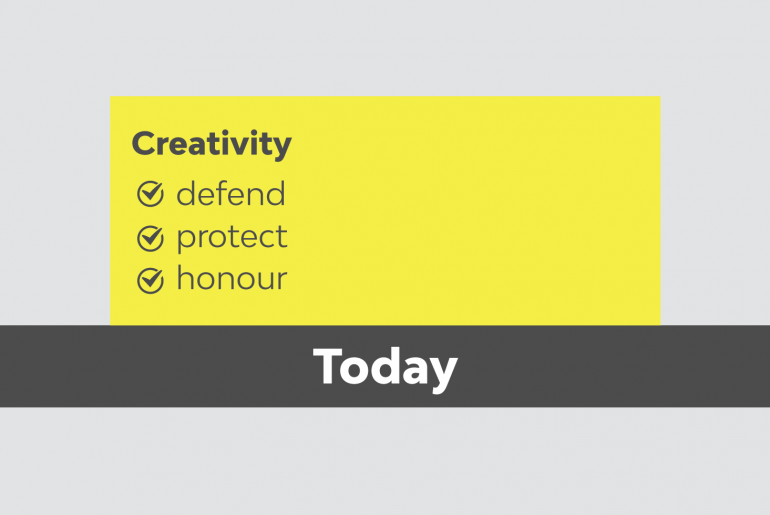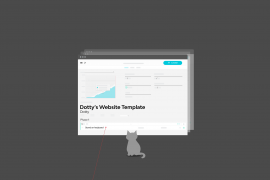There’s a saying. Fail to plan, and you plan to fail. Benjamin Franklin gave us that gem I think. But when it comes to trying to run a creative business, it couldn’t be more true – planning is essential.
2 and a half years ago, we embarked on a quest to banish timesheets to the archives of agency history.
That quest was potentially misunderstood. We weren’t suggesting that everyone can just do what they want without any productivity or financial accountability. We just wanted to make things better so that the data being used to make business decisions was accurate.
Let’s be honest.

Do a little “hands up” to yourself if you’ve ever…
- Completed your timesheets 3 weeks late and just added 7.5hrs to each day, as you spread your work across jobs you thought you’d been close to at the time?
- Just entered exactly what someone told you to, in order to protect the “profitability” of the job?
- Said, “we’ll invest additional in this job and make it up on the next one” – and then never do?
In the last 8-10 years of running creative agencies, I’ve seen all of the above and more – multiple times. In co-founding my own agency, For The People, we’d agreed that trying to track time was just a waste of time. Too much manipulation going on and too hard to rely on the input of people.
Then, along come Streamtime asking us to redesign timesheets!
Streamtime isn’t the answer. WTF?!
If you think the answer to your time tracking headaches is a piece of software, then I’m afraid I’m going to disappoint you. I like to think we get pretty close, but let’s face it… relying on humans to tell the truth, do the same thing at the same time, every day, and prioritise something they loathe doing above something they love doing, then you’re doomed to fail.
A tool (on it’s own) can’t do that. And we don’t expect Streamtime to perform miracles – otherwise we’d be much richer than we are!
Getting your team in shape, getting them motivated, giving them freedom and autonomy, can push a lot closer to the holy grail of planning and tracking time.
There’s the keyword.
Planning.
Moving from tracking to planning
We believe that too many tools focus on tracking. If you’re always focused on tracking then you’re always trying to remember what happened. Before lunch, yesterday, last week, last month. The further away it gets, the less accurate your recall. The riskier the decisions that your business makes based on the data that humans gave it.
Welcome to Monday morning everyone. (Ahh Monday.com well done, I see what you did there).
At my last studio, it was Monday morning that set us up for a successful week. It was one of the only times of the week that we all got together, talked about what we had on, made adjustments to the schedule, and made calls on what was important this week and what could wait till next week.
We did this as a team. Tasks weren’t handed out like it was 1999. They were decided on by a bunch of grownups, who (most of the time), made the calls on what they should be working on, and when they were working on it based on the deadlines and hours they’d been given.
This was a planning session. And Streamtime was a part of it.
Each Monday morning we’d drag a Mac downstairs (we worked in a terrace house) and called up the Streamtime schedule so each member of the team could talk through what they wanted to get done this week. They could do this because they’d come to the meeting prepared. Their ToDos were in order and ready to go.
And if they didn’t…? Oh, the shame. The shame of not having anything on the screen, and the guilt of not looking as busy as their colleagues. Of course, shame wasn’t the intention, but it was a nice stick (or carrot, depending on how you see it) to motivate people to get their shit in order.
Sometimes, an email from a client at 10am may put paid to these well laid plans. But on the whole, the plan remained in place. A schedule of who was working on what, with who, and when.
A sense of achievement
That’s the intention behind the ToDo screen. If you’ve planned ahead of time, then tracking time is all about achievement. The feelz you get from dragging a task from todo to done (with a knowing smile that you tracked time but it didn’t even feel bad)! Sure, other ToDos can crop up across a day and week. But, if you start with a plan you’re only dragging, adjusting and dropping your way to divine tracking of time.

Am I getting carried away?
Damn right I am, I’ve seen it work. I’ve seen countless customers use it this way. I’ve also seen plenty use it at the end of the week (like a timesheet), but like I said, we can’t change humans. We have customers who say that they “now capture all the time that slips through the cracks” and “can bill for it” meaning they’re making more money. They’re also making decisions based on more accurate data. Decisions that help them to run projects and jobs better in the future.
I love talking to our customers
Last week, I had a call with one of our customers in Munich. I love what they do and what they stand for. Seeing them signup for Streamtime, I was chuffed. They’re a young agency, shaking things up from their past lives, looking for tools that match their own point of view and approach to the world – and we were chosen.
But in the call, I got a bit of a mixed reaction when I asked, “How’s your experience with Streamtime going?” Overall, it was certainly more useful than detrimental. But, I got the sense something wasn’t right. A few questions later and some of the reasons came out. Different people were using it in different ways. Some recorded their time at the end of the week. Others just used Google Calendar and zapped (with Zapier) meetings and time to work on jobs into their ToDo screen. Others did something different again. Let me say at this point that there are only 9 people in their team.
It reminded me a lot of what we’d gone through at For The People. Giving people the freedom to do what they want, manage their own time, and not sweat the detail as long as everything gets done on time and on budget.

Fewer rules, better process
It can certainly work, but it also leaves a lot to chance. I shared the story of the Monday morning meeting. Getting the right start to the week. Getting everyone doing one thing the same, at the same time, just once a week. It was one small rule, not a command and conquer approach, but a chance to align.
I think it’s the perfect way to get value out of Streamtime. Use it as it’s intended. Why not use that Monday morning meeting as an excuse to take a temperature check of how everyone is doing? Take it in turns to bring in breakfast? Share what happened on the weekend?
Getting Monday off to the right start, planning ahead of time, and feeling part of a team can make all the difference. When all you have to remember is to drag from ToDo to Done, you can redirect that brain power on to more important things, like work and staying creative.
Share what your Monday mornings look like in the comments below or by hitting us up on Twitter or Instagram.
Just hit the button below to sign up (if you haven’t already of course)!







